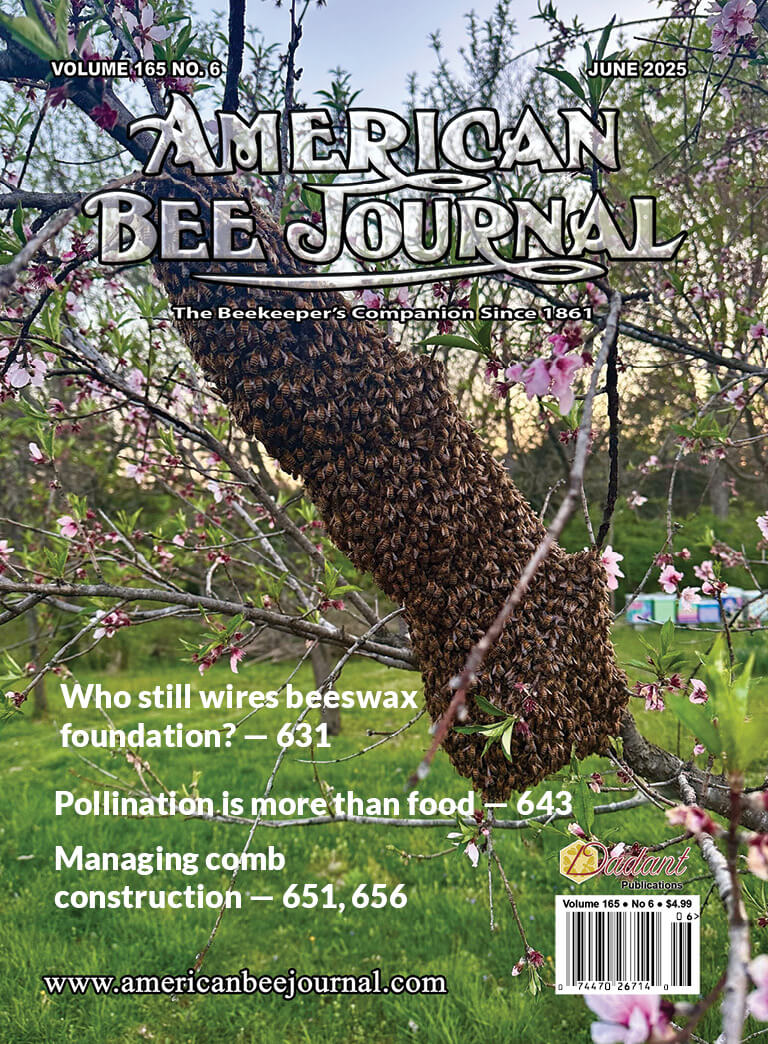All beekeepers who produce surplus honey have one thing in common; marketing. The first job in marketing is preparation. Honey is a pure and nearly sterile product. Keeping it in that condition is the first consideration. It is possible to harvest comb honey without ever touching the comb. This is even possible with cut comb. First make sure every tool used is as sterile as the honey you are going to touch with it.
If you do not have a dish washer that sterilizes dishes, one commonly available way to sterilize tools such as the knife, spatula and tray upon which you process comb honey is to put them in a 10% solution of sodium hypochlorite. That chemical name may be less familiar to you, but it is household bleach. 1 part bleach in 9 parts water will sterilize your stainless steel tools. You must air them out afterwards. I suggest using rubber gloves so that the tools are not touched by hand while washing in the sterilization process. The gloves also keep your hands out of the toxic solution. Why use something toxic? The chorine is very toxic. However, it is also extremely reactive. It will react with air in a matter of minutes and completely dissipate leaving nothing behind to taint your honey. Once the smell is gone, all of the chlorine is gone, dry your tools with a clean paper towel and you are done.
At this point I remove the first pair of gloves and put on another. There is an alternative method of sterilization that I often use. A flame from a torch or even an extended lighter will sterilize metal in seconds. The metal heats quickly to a sterilization temperature. The metal need not be heated to red hot. The flame will do the job in one or at most 2 seconds. Just pass it quickly over the entire metal surface and sterilization is complete. Flames do tend to stain your stainless steel after several applications.
The knife will touch only hive parts hereafter. It can be used to separate round sections, square sections, half comb cassettes or cut comb out of a wooden frame. A standard spatula comes in handy to pick up any type of comb honey section including cut comb. A stainless steel rack to place cut comb above a drip pan can be used to rest cut comb sections before packaging. That same spatula can be used to move round sections, square sections and cassettes. There is something nice to be said for telling your customer, “When you pick up that honey comb, you will be the first person who has ever touched it.”
Storage of comb honey is very important. Our product has a lot of value. The best thing we can do for our customers is keep it as pristine as when we first took it from the bees. The best way to store comb honey is in a freezer. Comb honey stored in the freezer may not change in color, flavor or texture for a decade. The first step is to place the comb honey section, frame, super or package in a plastic bag. That will keep condensation off the product when it is removed from the freezer later. Comb honey taken from the freezer should be allowed to reach room temperature inside the plastic bag to avoid condensation from ruining the label or the honey.
CO2 can be used to treat for wax moth but the freezer is equally good, if not better at control. CO2 is more expensive and does not preserve the honey comb like freezing. Make freezer space for your comb honey a priority.
Packaging for comb honey has diversified over the years. One quality I much appreciate about round sections and half comb cassettes is their mail-ability. These products are less likely to leak in transit because they have no cut edges. Both products are more easily processed. You take them directly off the bees, and with very little cleaning, place the clear plastic covers on and seal with the label.
Cut comb honey has the advantage of producing a little more quantity of product most of the time. However, the processing is more involved with cutting, draining, packing in the hard plastic box and then labeling. More processing time must be allowed with cut comb. Draining over a drip pan with the cut comb on a draining rack takes time. The equipment for cut comb is more economical. Standard shallow frames are less expensive than round section equipment or half comb cassette equipment. There are uses for all of them and most comb honey producers are wise to have all of them on hand.
Before 1900, after the process of making sugar and sugar syrup were industrialized, adulterated honey became available. It is available today from China and other nations. A 12 oz honey bear of syrup with a small amount of honey for flavoring sells for …


